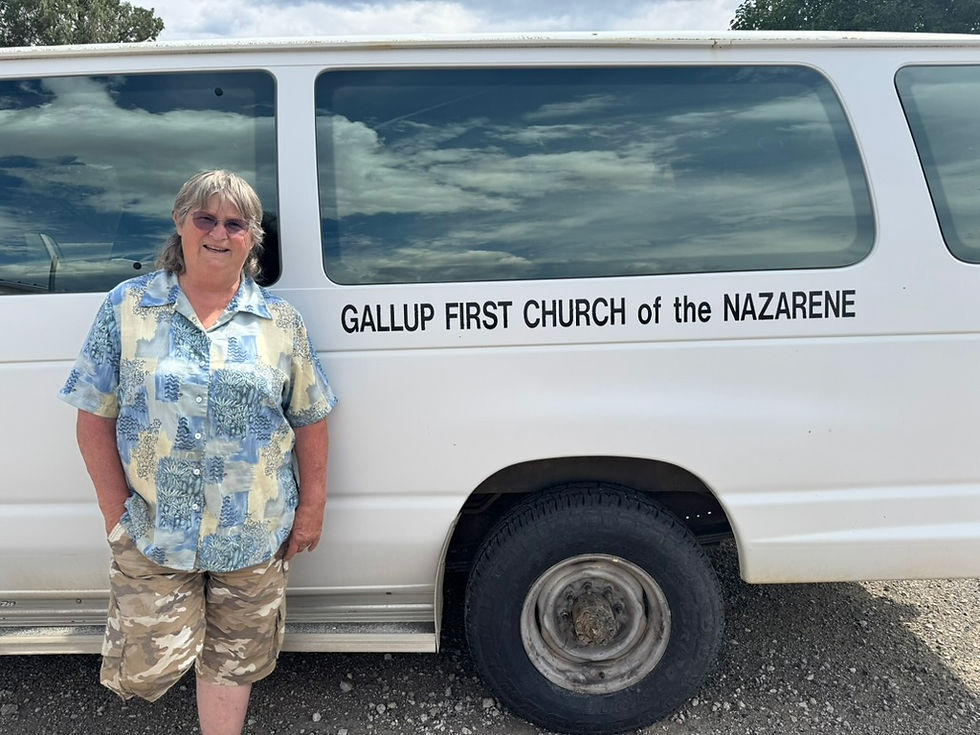National Forest Foundation Unites Southwest Firewood Assistance Programs
- Hannah Stinson
- Nov 17
- 4 min read

In August, the National Forest Foundation held a workshop to expand its
program, Wood for Life: a Tribal Fuelwood Initiative. AGH was invited to participate in sharing best practices from the firewood banks we have funded over the past 3 years and to help tribal banks prepare to apply for this year’s funding.
Energy Equity Program Manager, Hannah Stinson, was invited to attend a workshop hosted by the National Forest Foundation through their agreement with the USDA Forest Service.
The first day of the workshop brought a nearly full conference room where many inspiring non-profit groups, and tribal and conservation leaders were present. Among the group sat University of Arizona, Coalitions and Collaboratives (cohost), Southwest Decision Resources (cohost), Coconino National Forest and USDA Forest Service Timber Staff, The National Turkey Federation, Wood for Life Program Managers and National Forest Foundation Regional leadership. I introduced our 2025-2026 Firewood Bank Assistance Grant and meet prior grantees who gave credit to our program for helping them develop better systems and long-term vision.
We spent two days discussing resources available to tribal firewood assistance programs in the southwest and beyond. We heard personal testimonies from Ames Meyers, Diné Bá’ádeitj For the People, about how the first 18 truck loads of logs they received at the beginning of the pandemic transformed their elder wood program.
The two days were well spent with examples of:
Federal contracts available to tribes showcasing the stewardship agreement between National Forest Foundation and the FS
How Wood for Life started and has continued to thrive
How to optimize travel distances and resources within Southwest tribal communities
Firewod HUB model strengths
Ecosystem restoration projects that repair historical landscapes and produce wood, presented by USDA Forest Service Silviculturist
Business strategy and professional resources for building better systems at your firewood bank
Helpful indigenous centered funding websites like Tribal Funding Registry and NDN Collective, Decolonizing Wealth Project, and Blue Forest which provides conservation financial aid
There were good discussions about the most needed resources to maintain a firewood program long-term, and how co-stewardship and public/private partnerships can lead to meaningful work with tribes. They have started to scientifically model the ecological benefit in the southwest, which is best done when tribes are engaged early in the planning process. The U.S. government has a fiduciary responsibility to fulfill its trust relationship with tribes, and there is hope around reevaluating fire and its benefit to greater ecological health. There is a shared belief that the current administration will honor efforts to rehabilitate timber ecosystems and recognize the impact of firewood assistance programs have on communities.
Neal Chapman, wildland fire captain for the Flagstaff Fire Department, was present and extremely supportive of the Wood For Life mission. An example of the USDA Fire Mitigation and Management Commission having tribal members from the Bureau of Indian Affairs and tribal governments ensures that native voices are included and that tribal feedback can create priority areas, recommend tribal partnership, and provide a great narrative for congress.
Contributing to the business panel, Dr. Rosanna Jumbo-Fitch, the former Chinle chapter president, spoke about the growth that their chapter firewood bank experienced and how they accomplished serving 3300 people by their 4th operating year, 700% growth over just 4 years. Her advice was powerful.
Ask yourself what are we doing to help your community? What does integrity mean to you?
She reminded us all to practice reciprocity, relationship building, and respect by embracing outside coaches, collaborating, and networking. Focus on your workforce she said, and define them (youth, transportation, sawyers, trainers, administration). Collect information on your clients because building data informs decisions and operations.
The second panelist, Change Labs founder, Duane Humesyestewa from Shiprock, AZ Hopi tribe, offered coaching and business development planning help for firewood banks. Resources are available for free on their website and extremely helpful for any firewood bank wanting to expand their operation.
The third panelist, Mary Descheeny-Reynes, a career HR specialist, gave her 14 best insights for maintaining a safe and strong workplace environment. Her list is as follows:
Good Leadership
Recognition
Provide Clear expectations
Clarity is kind
Communication is key
Trust is sacred
Mutual exchange
Takes time to develop and nurture once there
Culture is a living system, not a checklist
Leadership sets the tone, leaders walk first, then invite others
Safety is more than a policy, it’s a belonging
Words carry medicine
Honor contributions as you would a gift, recognition is important
Representation matters. Diversity without inclusion is worthless.
Conflict can be healthy if handled well
Balance between work and wellness honors the whole person
Having routines/practices/habits will root your team
Feedback is a teaching moment
We reflected as a group on the operational strengths of some firewood programs, like, transportation and hauling safety- knowing how to secure your load, weight limits, and how long to transport each load. Attention to the set-up of a firewood bank early creates efficiency for later, setting up roles and organizing equipment with names and specific uses goes a long way.
“The less [you] touch the wood the more beneficial the operation is!”
The Wood for Life community is an investment in the long-term vision and maintaining that vision is key for success!





Comments